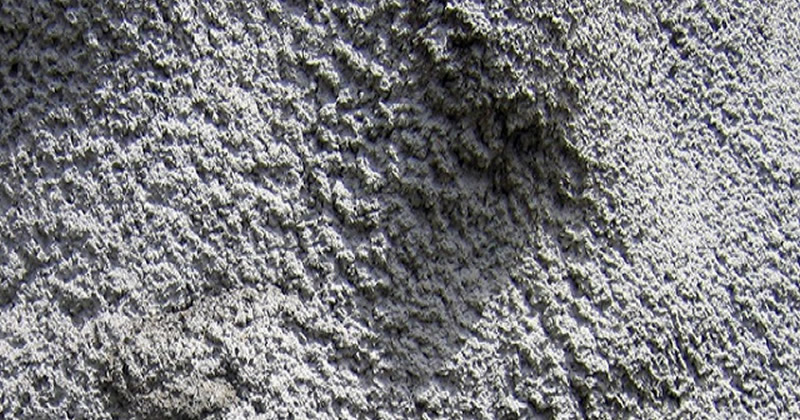3 ways to teach you to identify fake fly ash

(1) The problem of large water demand ratio of fly ash
In concrete, we urgently hope that the water demand of each material should be small. In this case, we will use very little water in the preparation of concrete, that is, under the condition that the water-binder ratio remains unchanged, the amount of cementitious materials will be saved, so We choose to use different grades of fly ash, and the water consumption is also different. Of course, the unit price of fly ash also varies greatly. Therefore, the choice of different grades of fly ash for the mixing plant needs to be determined according to the concrete indicators and cost performance. In the process of concrete production, it is unavoidable that the water demand of fly ash is too large, which requires our technicians to sample and re-examine the incoming materials. The dosage of the agent should be solved, and the changes in the quality of fly ash in the later period should be monitored, and the adjustment of the mix ratio should be done well.
(2) Burning vector is too large
The unburned organic matter of fly ash is mainly charcoal. We know that charcoal has strong adsorption, which is why the undisturbed ash is commonly known as the unsorted ash. The carbon content of this ash is relatively high, and the adsorption of admixtures is very high. When fly ash enters the site, the adsorptive properties of fly ash can be compared through cement and fly ash pure slurry test and loss over time. In the process of concrete production, it can be solved by adjusting the proportion of fly ash and adjusting the amount of admixtures.
(3) The problem of excessive fineness
Studies have shown that the finer the fly ash, the higher the activity, the activity contribution rate of the particle size below 10 microns is 100%, and the particle size above 100 microns is basically inactive, and it only has a filling effect and a morphological effect in concrete. Therefore, if we want to exert the pozzolanic effect of fly ash in concrete, we must try to use high-quality fly ash. If we use fly ash only to improve the workability of concrete, fly ash of lower quality can be used. In concrete production, if the fly ash is too fine, we should pay attention to whether the water consumption of concrete increases, whether the adsorption of admixtures increases, etc., and adjust in time to ensure the fluctuation of the state and final strength of the concrete.
(4) Side effects of fly ash production process
Fly ash was first classified into different grades of ash. With the development, in order to increase the benefits of fly ash, the power plant has obtained more high-quality ash by grinding the system ash. The ground ash cannot be used because the spherical structure of the fly ash is destroyed and the workability of the concrete is improved, but in fact it is the opposite. The spheroid is ground into several small spheroids, which basically does not affect the improvement of the workability of concrete, and at the same time can increase more secondary chemical reactions and increase the strength.
Second, in order to increase the combustion value of coal-fired power plants, power plants often add oils and fats to the coal-fired coal to support combustion. However, it is the burning charcoal of these combustion-supporting oils and fats that exists in a large amount in the concrete, especially in the mixing plant using polycarboxylate admixture, the concrete produced is relatively serious with floating black ash. The fly ash sampled at the site can be put into a small bucket and water is added for stirring. If there is a lot of black ash of oil and grease, it means that the fly ash has a lot of combustion-supporting substances added, or the quality of the coal itself is not good.
In actual production, it can be solved by reducing the content of fly ash, reducing slump or adjusting the adaptability of admixtures, but the final solution is to solve the problem of fly ash material and solve the problem caused by excessive combustion-supporting substances. fundamental.
Third, in order to prevent sulfur and nitrate from polluting the air, the power plant will carry out desulfurization and denitrification treatment. Usually, urea and ammonia are cheaper to deal with, which is often improperly controlled, resulting in the occurrence of ammonia in concrete when it encounters water. Concrete bubbling releases ammonia gas, and concrete has a pungent odor. In the author’s experience, a similar situation occasionally occurred. The main body of a certain floor of a high-rise concrete was poured very late. When the workers went to work the next morning, many workers were choked by the inexplicable pungent smell and could not go to the construction. , there is no way to wait for the smell to slowly dissipate until about 10 am. There is also a more serious case. After the workers poured the concrete, the eyes of all the workers who poured the concrete the next day were damaged by some kind of gas stimulation to varying degrees. After investigation, the fly ash factory was poorly managed, and the ammonia substances used for denitration and desulfurization were investigated. accident caused by leakage.
Finally, the inspection of fly ash on site is very important. It is enough to control the quality of fly ash by simply observing the color depth, adding water and stirring to see the color of the floating ash, and judging the quality of fly ash by sieving and analysis. quality. In the production process, a series of unfavorable problems caused by the quality decline of coal ash can also be solved by adjusting the mixing ratio. In the later period, contact the manufacturer to adjust the quality of the fly ash product and restore it to the normal state of use.
